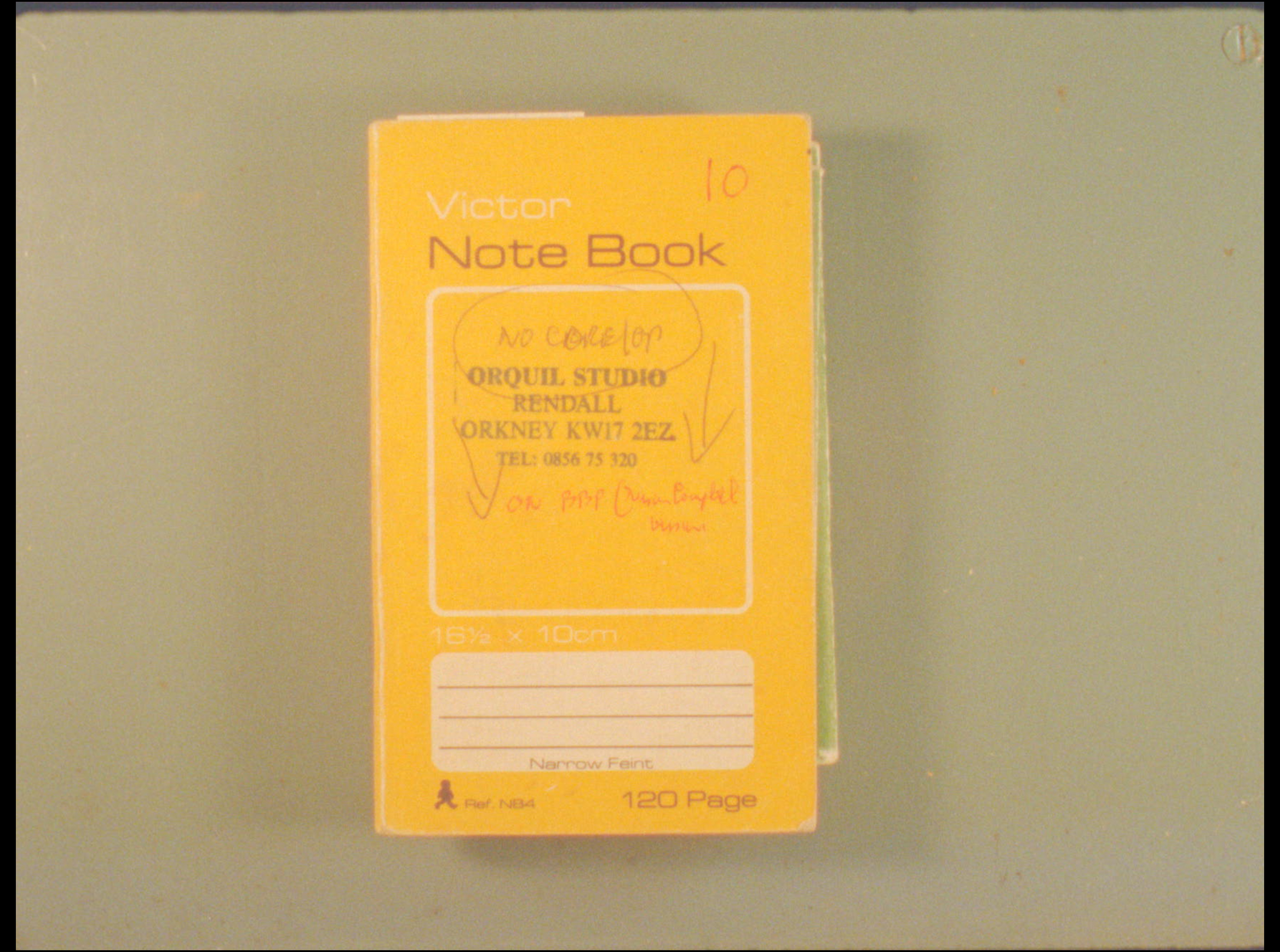Gracing Pattern
Luke Fowlers piobiareachd for Margaret Tait
So Mayer



Being in a Place: A Portrait of Margaret Tait
Director LUKE FOWLER, Year 2022 , Country UK
In 1975, Margaret Tait picked up a zoom lens in London on her way back to Orkney from the First Independent Film Festival which took place in February at the Arnolfini in Bristol, a festival that – along with Edinburgh – lay the foundations of much of the radical programming in the UK. She shares this information in passing while describing her camera equipment to an unheard interviewer. As she continues speaking about her 16mm cameras, one wants the interviewer to say, “Stop, wait! Did you see Laura Mulvey and Peter Wollen’s Penthesilea, Queen of the Amazons there? Did you meet a young filmmaker called Derek Jarman, who was showing some of his short films? What about Liberation Films’ locally-embedded Starting to Happen?” Tait is so often falsely represented as unconnected to the winding ways of British cinema – she knew Lindsay Anderson well, for example – that it’s both heartening and heart-stopping to hear her discuss, almost offhand, her connectedness to the radical alternative cinema emerging in the 1970s.
But the interview was recorded for Channel 4 more than thirty years ago and unearthed by Luke Fowler and Sarah Neely in the process of making Being in a Place: A Portrait of Margaret Tait. In this film, it becomes one thread amongst others – her list of beloved filmmakers including Satyajit Ray and Fellini, her memories of film school in Rome – that Fowler braids to show that, while Tait is now strongly associated with Orkney where Fowler shoots his 16mm footage, for her, ‘being in a place’ was to be in a transnational network of places. Orkney, for Tait, and as is seen in the film, was a centre of shipping, commerce and cultural making – something that the metropolitan snobbery of the mainstream British film industry did not respect.
Fowler told Erika Balsom, in an interview for Film Comment, that the Channel 4 interview was “completely scripted,” and his film uses excerpts from multiple similar versions of Tait’s responses to highlight the idée fixe of mainstream media, with its focus on controlled, conventional narratives. This mentality is palpable in rejection letters from both that channel and the BBC to Tait’s proposals for creative documentaries that would include “a film within a film.” These letters and other archival documents, including budget proposals, back-of-envelope calculations, and production-to-exhibition ratios alongside shot lists and scenarios, flash onscreen, inspiring an archive rage of wonder at what Tait could have made had the funding that has been inspired by her tireless work of filmmaking and advocacy been available to her.
Fowler’s film is a continuation of the ongoing project of uncovering Tait’s expansive cinema. Neely, the film’s co-producer and a path-breaking Tait scholar, appears briefly in the film, as does Peter Todd, a filmmaking contemporary of Tait’s who screened her work at the National Film Theatre and has edited collections celebrating her work. Thus, Being in a Place brings together in Orkney both those who knew Tait (including some who appeared in her films as children, a grace note reminiscent of Les plages d’Agnès), those who worked in parallel with her (including a wonderful brief interview with Ute Aurand), and those who are part of her legacy, Fowler included. There are conversations with oil workers and farm workers that align Tait – with her pages and pages and pages of notes – as a fellow worker within this shared Orkney landscape, both as a filmmaker and as a locum doctor, with one interviewer recalling the time she treated his son.
One of the many interviews woven into the film’s soundtrack is with piper Donald Lindsay, who gives a resonant description of the musical form of piobiareachd. Hector McAndrew composed one such piece based on Tait’s poem Hilltop Pibroch (Tait uses an older transliteration), which Tait included in her films Where I am is Here (1964) and Blue Black Permanent (1992). Lindsay says the piobiareachd “takes the form of a ground and a series of variations,” of which the crunluath he plays is a particularly complex gracing pattern, marked by “a rising ripple of notes.” A few shots later, we see Fowler’s 16mm camera reflected in the wing mirror of a car, offering his film as a gracing pattern on the ground of Tait’s work, both finished and unfinished, and a third, generous term beyond these, that recognises her constant refining and revisitation in image and text. A shot list scribbled in the margin of a printed poem feels as vivid and regenerative as the Scottish primroses and escholtzia that Fowler’s camera references in salute to Tait’s own work. “I’m more interested in filming the landscape, even if it’s a minute landscape, than shooting the scenery,” Tait notes in the voice-over interview. This is the abiding challenge and delight of Tait’s work, its generative power, as seen in Fowler’s film: to make cinema a place in which we can be.
So Mayer is a writer, bookseller, organiser and film curator. Their first collection of short stories Truth and Dare is out now from Cipher Press. Their recent books include A Nazi Word for a Nazi Thing, a book-length essay on queer films, bodies and fascism for Peninsula Press, and their most recent collaborative projects are Space Crone by Ursula K. Le Guin (Silver Press), The Film We Can’t See (BBC Sounds), Unreal Sex (Cipher Press), and Mothers of Invention: Film, Media and Caregiving Labor. So works with Burley Fisher Books and queer feminist film curation collective Club Des Femmes.
This text was commissioned by Open City Documentary Festival to accompany the screening of Garden Pieces and Being in a Place: A Portrait of Margaret Tait at ICA, 12 September 2023.